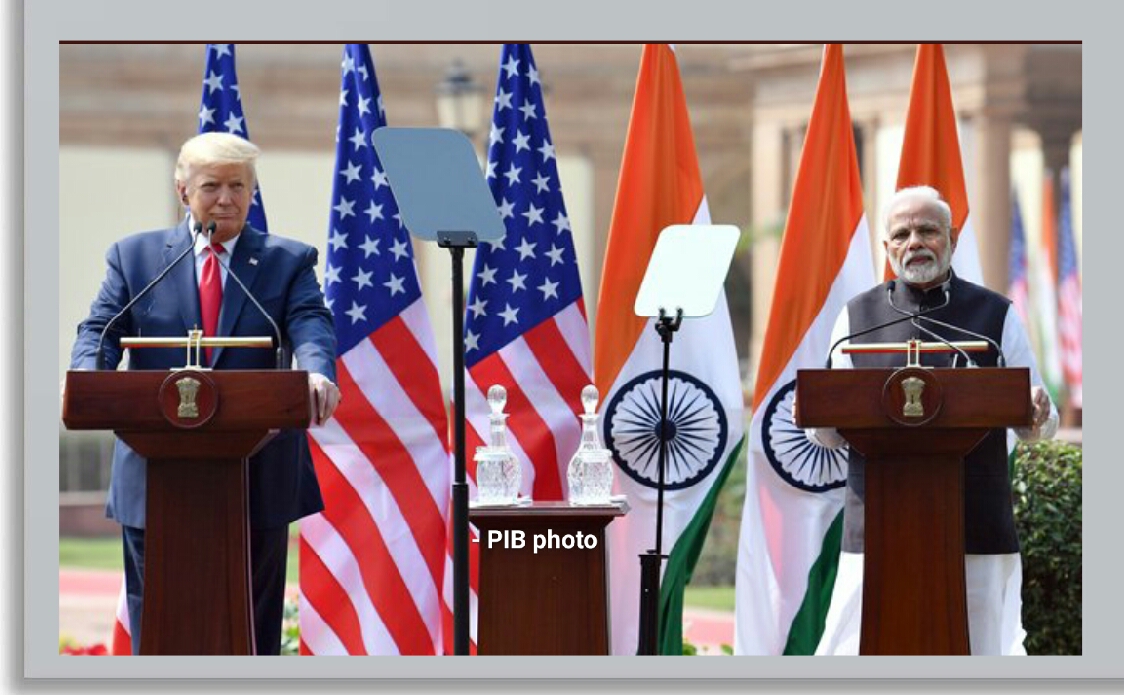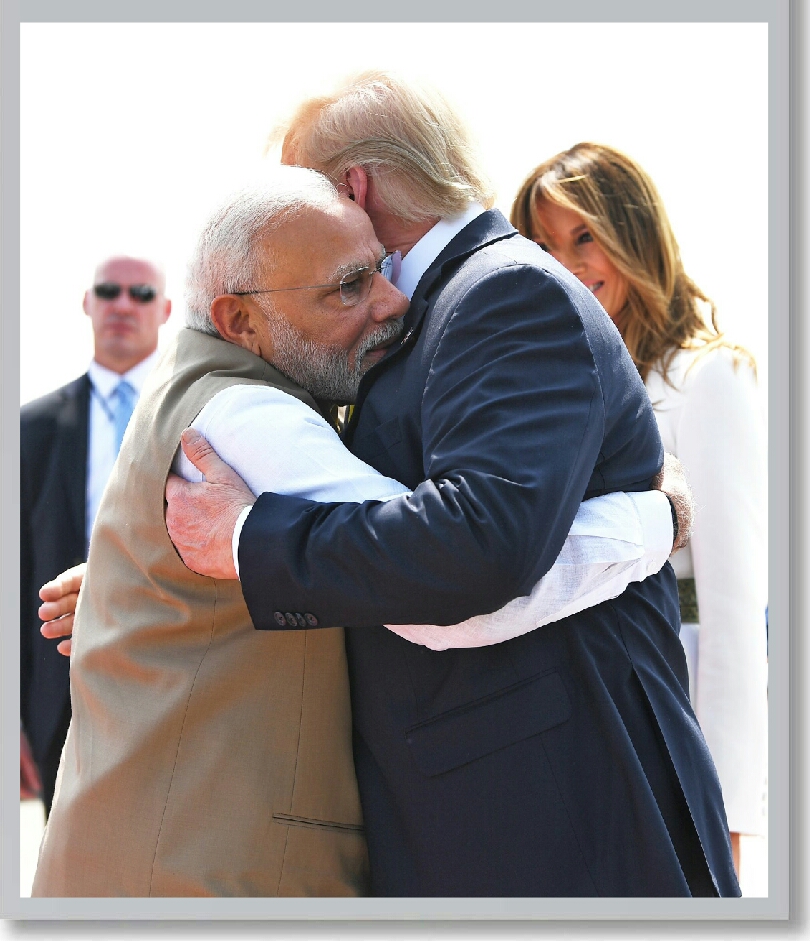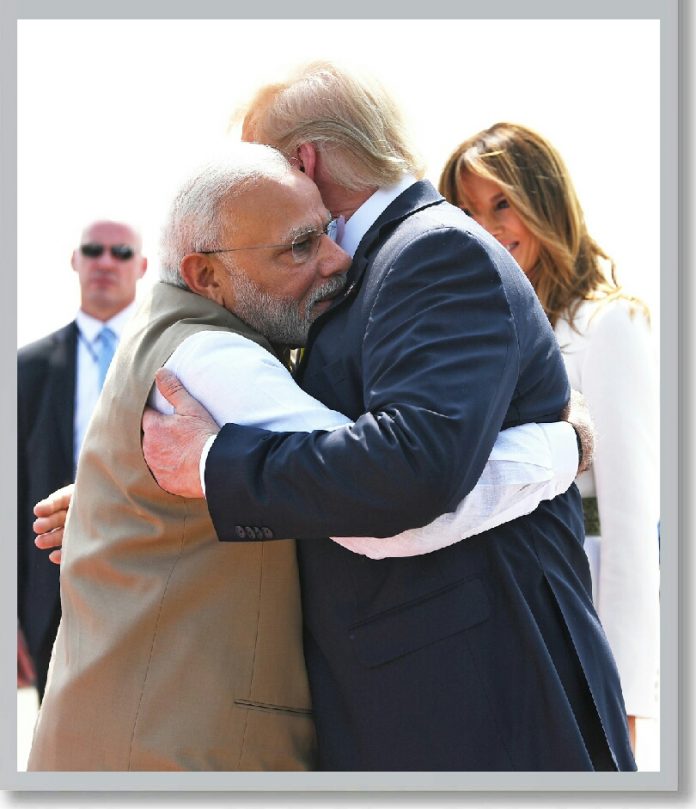by our special correspondent
The recent visit of american president Donald Trump might be iconic for India but it’s a billion dollar love story of Trumph. A defence deal of 30 billion had forced the president to come to India .

Needless to mention the visit might have forced on him but the defence equipment makers of USA.But sadly to set up a protection shield from superpower china India has no alternative but to succumb to it to safeguard it’s security.

US President Donald Trump’s India visit has ended successfully for both sides. No trade deal could be signed. India was willing to be accommodative, but the US side decided to wait for a more ambitious deal later in the year—which is a code word for pressuring India on a wider front in the interim. This came out implicitly in Trump’s press conference where he cited his tussle with China and repeated his ill-considered references to India as a tariff king, which is factually wrong, and 100% duty on Harley-Davidson motorcycles when India had offered to bring duties on these motor bikes to zero during the negotiations, to be only told that the US side was no longer interested in obtaining this concession.

Trump’s decision to come without a trade deal in the offing gave us the opportunity to make him experience an ego-boosting trip, which was done with panache.
The cacophony over the two-day visit of US President Donald Trump to India was deafening, but at the end of it, there is nothing much to cheer for the Indian side.

The only tangible outcome of the Trump visit is the $3 billion defence deal. That bolsters India’s defence armory but is no good news for Modi’s ‘Make in India’ drive. Also, let us not forget that Trump has smartly scored points back home winning business for his country and acting to keep China in check (US-India military cooperation is key). For India, the big ticket item was always the trade deal to generate jobs and that didn’t happen.

At the Motera Stadium, both Trump and Modi engaged crowds with smart oratory. Both men struck all the right notes on optics, showered praises on each other’s work (Modi spoke about Trump’s vision and Trump praised Modi’s inclusive governance). Political messages were sent. Trump boasted about how he built his country’s military might.
Modi compared the Statue of Liberty with the Statue of Unity. Trump, who faced an impeachment trial at home for misusing his office, had been dreaming of 7 million people awaiting him in Ahmadabad and termed his visit —‘Namaste Trump’ —as the biggest event “they have ever had” in India.

The welcome given to him was exceptional, as no other country can give him a reception on the scale that he got at Ahmedabad. He has been overwhelmed by it, judged by his many comments. Prime Minister Narendra Modi was astute in giving pointed attention to Trump’s family in his remarks at the Motera stadium.
Trump was exceedingly generous in his personal references to Modi in his address, calling him “an exceptional leader”, a “champion of India”, a “great Prime Minister”, a “tremendously successful leader”, noting his electoral victory in the largest election anywhere.
Even before Trump landed in Ahmedabad, reports had already suggested that a trade deal, even a limited one, wasn’t happening this time. The demanding US side has been mounting pressure on India to reverse price restrictions on certain products, rising tariffs and India’s position in e-commerce business, while India had demanded that the US restore the Generalised Systems of Preferences (GSP), which Trump had withdrawn in June.
The GSP had allowed Indian manufacturers duty free exports of over 3,000 select products to the US. As it appears now, the trade deal is not happening.
Protectionism is Trump’s stated policy and no country, including India, is an exception for the US unless the relation is beneficial in terms of business transactions. In recent years, Trump’s policies have significantly damaged India’s prospects—in terms of trade and business.
That’s no surprise, given the fact that Trump thinks and talks like a businessman. But this time, beyond the business deal, Trump needed this India visit for his electoral ambitions. About 4.5 million people of Indian origin live in the US and are of political significance to Trump.
He needed their attention. According to the National Asian American Survey, in 2016, only 16 percent Indian Americans voted for Trump. He would want the figure to go up this time by playing a ‘friend’ to India.





